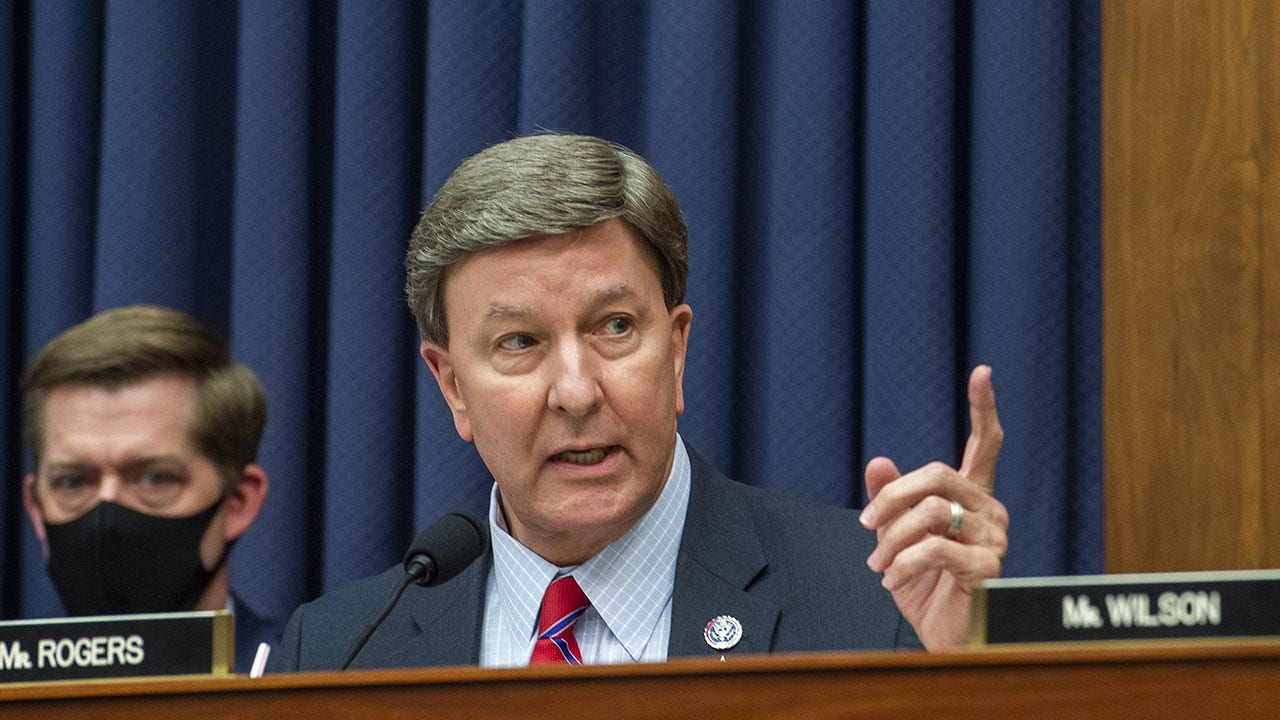When Donald Trump is inaugurated as president for the second time in January 2025, he will assume power over the regulation of a tech industry that’s changed significantly since his first term began in 2017. The tech industry’s honeymoon period with the US government has fizzled, and both Trump and his successor, President Joe Biden, took a skeptical stance toward tech CEOs, albeit for different reasons. Their antitrust enforcers initiated some of the first major anti-tech monopoly actions in decades.
Technology
Elon Musk has unusual relationships with women at SpaceX, WSJ reports
/cdn.vox-cdn.com/uploads/chorus_asset/file/24090206/STK171_VRG_Illo_3_Normand_ElonMusk_03.jpg)
Elon Musk had a sexual relationship with a former SpaceX intern, who he later hired onto his executive team, according to The Wall Street Journal. He also had a sexual relationship with a second employee. And a third woman alleged that Musk asked her several times to have his children; she refused. He then denied her a raise and complained about her performance.
One of the women who Musk had a sexual relationship also drew the ire of SpaceX President Gwynne Shotwell, who accused her of having an affair with Shotwell’s husband. When the woman reported this to HR, HR told Shotwell. “Shotwell told the HR department at SpaceX that she wanted the woman removed from the office of the chief executive,” The Wall Street Journal wrote.
The Journal’s article cites text messages, emails, and other documents. It is based on interviews with more than 48 people, including friends and family members of the women, as well as former employees.
Musk didn’t reply to WSJ’s requests for comment. Shotwell said the WSJ’s request for comment “paint[s] a completely misleading narrative” of what working for SpaceX is like, and that the WSJ story doesn’t reflect SpaceX’s culture. She also said that SpaceX investigates all harassment complaints and responds appropriately.

Technology
The Beatles’ final song, restored using AI, is up for a Grammy
/cdn.vox-cdn.com/uploads/chorus_asset/file/25722381/1405111904.jpg)
The Beatles have been nominated for two Grammys — nearly 50 years after the band officially split up. Their final song, called “Now and Then,” was restored last year with the help of AI, and is now up for record of the year alongside the likes of Beyoncé, Charlie XCX, Billie Eilish, and Taylor Swift. It’s also been nominated for best rock performance, where it goes up against Green Day, Pearl Jam, and The Black Keys.
However, “Now and Then” was never released, as technology at the time couldn’t separate John’s vocals and piano to get a clear sound. But in 2021, filmmaker Peter Jackson and his sound team were able to separate the instrumentals and vocals with machine learning technology, allowing Paul McCartney and Ringo Starr to finally complete the song.
Though “Now and Then” was finished using machine learning, it still falls within the bounds of The Grammy’s rules surrounding AI. The guidelines currently state that “only human creators are eligible to be submitted for consideration for, nominated for, or win a GRAMMY Award,” but work that contains “elements” of AI material is “eligible in applicable categories.”
It’s a bit strange to see “Now and Then” competing with modern-day music like Beyoncé’s “Texas Hold ‘Em,” but it’s been a long time coming. We’ll get to see how the Beatles fare during the 2025 Grammy Awards, which takes place on Sunday, February 2nd.
Technology
What a second Trump presidency means for tech
/cdn.vox-cdn.com/uploads/chorus_asset/file/23951553/VRG_Illo_STK175_L_Normand_DonaldTrump_Negative.jpg)
Now, the tech industry has wised up. Most CEOs have looked back at the last eight years of techlash and seemed to conclude that they should be as visibly apolitical as possible — though they’re happy to lobby behind the scenes. At the same time, some have gambled that being in Trump’s good graces would be beneficial — and that risk seems to have paid off. Meta CEO Mark Zuckerberg, who Trump has literally threatened to send to prison, praised the president-elect’s fist pump after the attempted assassination and has made nice with Republicans about Meta’s content moderation choices. Amazon founder and Washington Post owner Jeff Bezos killed an endorsement of Kamala Harris in the paper. And, of course, Tesla CEO and X owner Elon Musk has made himself one of Trump’s chief allies, securing a promise that he could run a “Department of Government Efficiency” (DOGE).
Trump, meanwhile, will have more power than ever — he’s rooted out former supporters who encouraged restraint during his first term, and key allies have sprawling plans for overhauling the administrative state.
All this to say, the next four years of tech policy will be unpredictable and erratic. But even as Trump tries to expand his authority, he’ll need support from the courts and Congress. These are the policies we’ll be tracking as Trump reassumes the presidency and what he could realistically do.
AI
A Trump presidency likely means a less constrained AI industry. Trump has promised to repeal the Biden administration’s AI executive order, which instructed agencies to create testing standards and guardrails to prevent AI from being used in discriminatory ways, like in allocating housing or determining legal outcomes in the criminal justice system. Trump previously signed his own executive order covering AI safety and standards, but it did not touch on discrimination. The second Trump administration will likely deprioritize AI discrimination safeguards and discourage the use of the Defense Production Act to require more transparency, something conservatives have characterized as government overreach.
AI policy is an area where Elon Musk will likely seek to exert his influence, assuming he and Trump remain on good terms. Musk runs xAI and has been critical of incumbent players like OpenAI — a firm he cofounded but later distanced himself from and sued. Musk has supported AI safety measures like California’s controversial and ultimately vetoed SB 1047, and he previously signed a call for a moratorium on major AI developments for safety reasons. But his focus on existential risks has been criticized by some AI researchers as a distraction from more immediate risks like discrimination.
AI policy is an area where Musk will likely seek to exert his influence
It’s also not yet clear how Trump will handle thorny copyright issues surrounding generative AI, including what information large language models are allowed to train on. AI executives, including Musk, could seek to shape how Trump views the issue in a way that’s favorable to them.
Antitrust
Trump’s approach to antitrust enforcement could be based mainly on personal grievances. Bloomberg Intelligence senior litigation analyst Jennifer Rie writes that “enforcement could be idiosyncratic based on president-elect Donald Trump’s view of the companies or industries involved.” Adam Kovacevich, CEO of the left-of-center tech industry group Chamber of Progress, bluntly said we’ll see a “‘Trump Welfare Standard’: is this company nice to Trump?”
Though Trump’s VP pick, JD Vance, has publicly praised Federal Trade Commission Chair Lina Khan, it’s not clear how committed Vance is to this stance or how much sway he will have. If he does get a say here, we could expect a continued crackdown on big tech firms to benefit “little tech” or startups that VCs like Andreessen Horowitz (another Trump supporter) want to see rocket with growth.
“Republicans no longer uniformly lean more business-friendly than Democrats.”
While business leaders may be relieved if Khan leaves the FTC, Rie says we shouldn’t expect “a return to the relaxed antitrust climate of 10 years ago … some aspects of the current aggressive approach will stick. Republicans no longer uniformly lean more business-friendly than Democrats.” Still, while she says it largely depends on Trump’s appointments, merger approvals could become swifter and recently revised merger guidelines could be unraveled.
Trump’s administration will likely continue the existing legal fights against Meta, Google, Apple, and Amazon (including two cases filed during Trump’s first term). But it could pursue more modest remedies, depending on who he appoints — and how Trump feels about a company like Google on any given day. “A slight increase in settlement prospects is possible down the road, especially if the cases don’t seem to be going well for the agencies,” Rie writes. “Trump doesn’t believe Google should be broken up, though we didn’t expect this to happen anyway.” Kovacevich also says Trump could use the cases “as leverage over the companies to get favorable treatment on speech and content concerns.”
TikTok
Perhaps Trump’s greatest flip-flop issue has been his stance on TikTok. Trump championed the original TikTok ban effort, which was shot down by the courts. But he’s more recently said he opposes a ban because it would just benefit Meta. Trump’s turnaround reportedly came after he met with Republican donor Jeff Yass, who has a major stake in ByteDance.
Under the Biden administration, Congress overwhelmingly passed a bill that could ban the social video app unless ByteDance divests it by mid-January, and Biden signed it into law. The DC Circuit Court of Appeals is currently deliberating about whether that law can be upheld and will likely release a decision by the end of the year. But TikTok’s chances of dodging a ban only “slightly” improve under a Trump presidency, according to Bloomberg Intelligence litigation analyst Matt Schettenhelm.
The law doesn’t give Trump “much room” to play with
If the DC Circuit decides to uphold the law and the Supreme Court declines to take it up or upholds that ruling, what Trump can do is somewhat limited. He could grant an extension of up to 90 days for ByteDance to complete its divestiture of TikTok, but under the law, he would need to certify to Congress that there’s an actual plan underway. The law does leave the president some discretion to determine whether more apps besides TikTok fall under the divestiture law’s purview and what represents an adequate separation. But TikTok is written into the statute, so Trump can’t just decide it no longer applies.
The law doesn’t give Trump “much room” to play with, Schettenhelm tells The Verge in an email, though he could exercise some judgment in approving TikTok’s divestiture proposal. Even if Trump took the “unusual” step of announcing his Justice Department wouldn’t enforce the law, Schettenhelm writes in a note to clients, “companies that carry the app would be undertaking enormous risk that Trump wouldn’t change his mind and seek crippling penalties. We doubt they’d do so.”
If the court strikes down the law — perhaps because it finds it violates the First Amendment or because Congress didn’t develop a strong enough record in the relatively quick lead-up to its passage — then the legislature would need to do the process over. While the bill had very strong bipartisan support the first time around, now that Trump has said he opposes a TikTok ban, it seems less likely Congress would spend valuable time on a bill that the president may not sign.
Tariffs and China
Trump famously started a trade war with China in his first term in office, and if his campaign rhetoric is to be believed, we’ll see a continuation of such economic policies this time. While Biden has implemented some protectionist economic policies, including export controls on advanced semiconductors, Trump has floated tariffs on goods imported from China at a rate of 60 to 100 percent.
That could have big implications for the many tech companies that use components made in China and for any companies that rely on China for a significant part of their business strategy (like Apple and Tesla). But because of that connection, this is another area where Elon Musk’s influence could be a wild card.
Alongside his promises of mass deportations, Trump’s China tariffs could dramatically change day-to-day life in America, as severe price hikes for imported goods would throw countless people’s lives and livelihoods into chaos. How far the administration will go is an open question, and one that makes predicting the future with any certainty — inside and outside the tech industry — difficult to do.
Net neutrality and telecom policy
Net neutrality — which already faces an uphill battle in the courts after SCOTUS rolled back Chevron deference — is likely dead under a Trump administration. Bloomberg Intelligence analyst Nathan Dean predicts a 90 percent chance Trump’s Federal Communications Commission abandons the effort to reclassify broadband providers as common carriers and subject them to greater regulatory scrutiny.
A Republican-led FCC will also likely allow more concentrated control of TV stations, Dean writes, and loosen broadcast merger and acquisition rules. Republican FCC commissioner Brendan Carr, who served during the first Trump administration, has called for big tech companies to pay into the Universal Service Fund — currently funded by telecommunications providers — and suggested punishing TV networks under broadcasting rules.
Musk could seek to limit programs that help Starlink’s competitors
It’s not totally clear yet how Trump’s FCC will handle other key broadband policy issues, including the rollout of the government’s Broadband Equity, Access, and Deployment (BEAD) infrastructure investment program. But once again, Elon Musk’s influence could become important here. Musk runs the satellite internet company Starlink, which has been passed over for some government contracts, but could lobby for more favorable policies under Trump. For example, the BEAD program currently favors fiber broadband, and Musk has critiqued the program as an “outrageous waste of taxpayer money.”
In his government efficiency role or in a more informal way, Musk could seek to limit programs that help Starlink’s competitors, like the Universal Service Fund, according to CNET. That program helps service rural communities with broadband — places where Starlink is well positioned to move in.
Content moderation
Conservatives including Trump have long complained about social media platforms suppressing conservative speech and accused them of bowing to Democratic government pressure to remove things like election or vaccine misinformation. Even before his reelection, platforms like Meta had heeded Republican pushback and loosened their moderation standards.
A Trump administration and Republican legislature could rework the Section 230 liability shield to let them actually punish companies for moderation decisions. In addition to the option of passing actual laws changing Section 230, Brendan Carr suggested in his Project 2025 chapter that the FCC could narrow its protections for a broad range of content moderation decisions. Ultimately, any executive or legislative changes to online speech rules could face the Supreme Court, which has so far upheld the right to conduct content moderation, although it signaled openness to potential legal changes in the future.
Kids online safety
Trump hasn’t said much about where he stands on this topic or on the leading congressional bill on the subject, the Kids Online Safety Act (KOSA). That bill remains stalled in the House after passing through the Senate (in combination with an update to children’s data privacy law), and it’s not yet clear what could happen in future congressional sessions. Current Republican House leadership has expressed concerns that KOSA could unduly limit speech, so a Democratic House might be more open to giving it floor time, but ultimately, the concerns with the bill don’t fall entirely down partisan lines.
Adam Kovacevich, whose group has opposed KOSA, suggests Democrats should be wary of passing the bill under a Trump presidency — pointing to lead cosponsor Sen. Marsha Blackburn’s (R-TN) comments about protecting kids from transgender content online. “Democrats will have to decide whether they want to hand Trump & MAGA state law enforcers a powerful new censorship tool,” he writes.
Electric vehicles
Electric vehicle tax credits and other climate-focused policies will likely be in jeopardy under Trump, though that might be somewhat complicated by his connection with Musk, with Tesla standing to gain from EV-friendly policies. Still, Wedbush analyst Dan Ives previously said that Tesla’s “scale and scope … could give Musk and Tesla a clear competitive advantage in a non-EV subsidy environment.”
Tesla’s “scale and scope … could give Musk and Tesla a clear competitive advantage in a non-EV subsidy environment”
Bloomberg Intelligence analyst Nathan Dean sees just a 30 percent chance of continued EV tax credits under Trump. He predicts continued rhetoric that EVs are “a boon to China’s economy,” alongside efforts to replace the tax credits with consumer incentives that could benefit traditional carmakers like General Motors, Ford, and Stellantis.
Semiconductor policy
Under the Biden administration, Congress passed the bipartisan CHIPS and Science Act, which injected funds into creating a domestic semiconductor production industry — something experts say is a national security necessity and critical to maintaining control over the supply chain for important technologies including medical tech. But Trump called the bill “so bad” during his appearance on Joe Rogan’s podcast, and soon after, House Speaker Mike Johnson (R-LA) said he was open to repealing the law (though he later walked back those comments). Trump can’t undo a law on his own, but he could perhaps instruct his Commerce Department to slow-walk aspects of its rollout.
Crypto
Trump has made significant overtures to the cryptocurrency industry, headlining a major Bitcoin conference this summer and picking up significant support from prominent crypto investors like Marc Andreessen and Ben Horowitz. With Trump’s election, the industry is likely to get its top wish: the ouster of Securities and Exchange Commission Chair Gary Gensler, whom the industry views as its chief antagonist. Expect more permissive and hands-off regulation of this industry, as Trump has called for making the US a “Bitcoin superpower.”
Technology
AI-powered attack drones take flight

Anduril Industries recently announced the launch of two advanced drones, the Bolt and Bolt-M, which are designed to enhance military operations through cutting-edge technology.
These drones are not just typical consumer models. They are tailored for tactical applications, with the Bolt-M variant specifically equipped for munitions delivery.
Cutting-edge technology in defense
The Bolt family operates on Anduril’s Lattice artificial intelligence platform, which integrates artificial intelligence to streamline complex military operations. The Lattice system is designed to manage machine-to-machine tasks at unprecedented speeds, allowing for efficient coordination in combat scenarios. This technology enables operators to focus on strategic decisions rather than navigating the drones manually.
I’M GIVING AWAY A $500 GIFT CARD FOR THE HOLIDAYS

Operator controlling Bolt-M drone (Anduril)
ROBOTIC DRONES ARE REVEALING SECRETS ABOUT NATURE’S DEADLIEST HURRICANES
Specifications of the Bolt and Bolt-M
Bolt
Weight: Approximately 12 pounds
Flight time: Up to 45 minutes
Range: 12.4 miles
Primary use: Intelligence, surveillance and reconnaissance; search and rescue
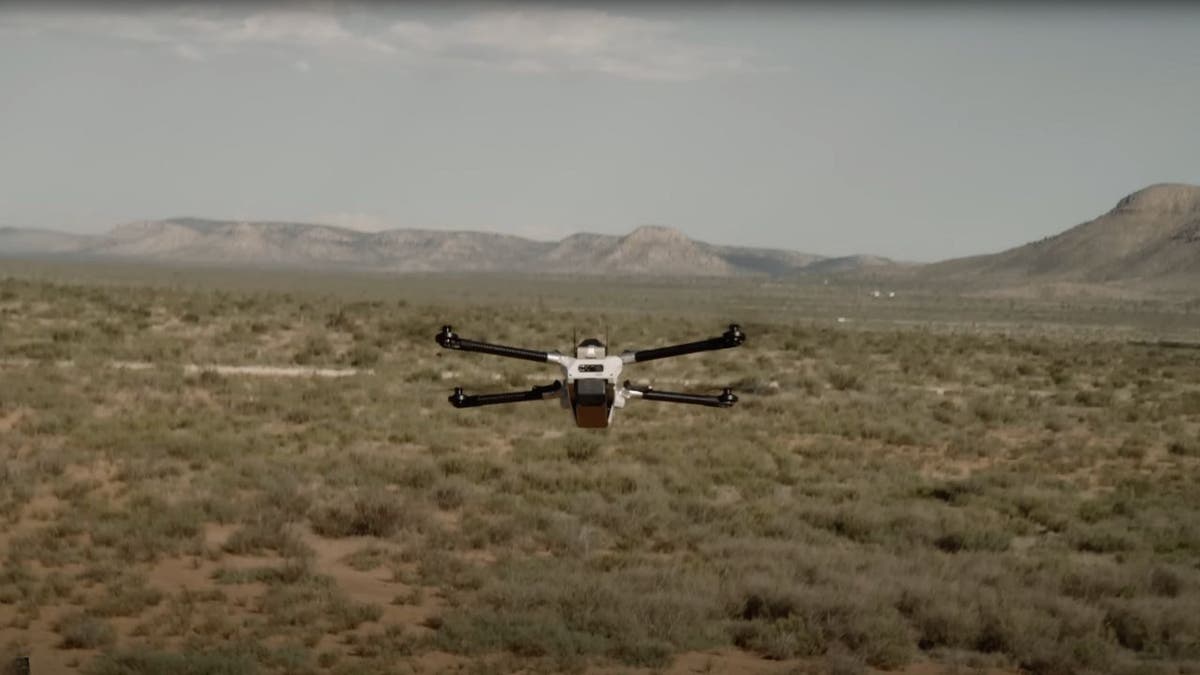
Image of Bolt drone (Anduril)
AIR FORCE’S XQ-67A DRONE THINKS, FLIES, ACTS ON ITS OWN
Bolt-M
Weight: 13-15 pounds (dependent on payload)
Flight time: Up to 40 minutes
Range: 12.4 miles
Payload capacity: Up to 3 pounds of munitions
Both drones can be deployed rapidly, with the Bolt being ready for flight in under five minutes.
WHAT IS ARTIFICIAL INTELLIGENCE (AI)?
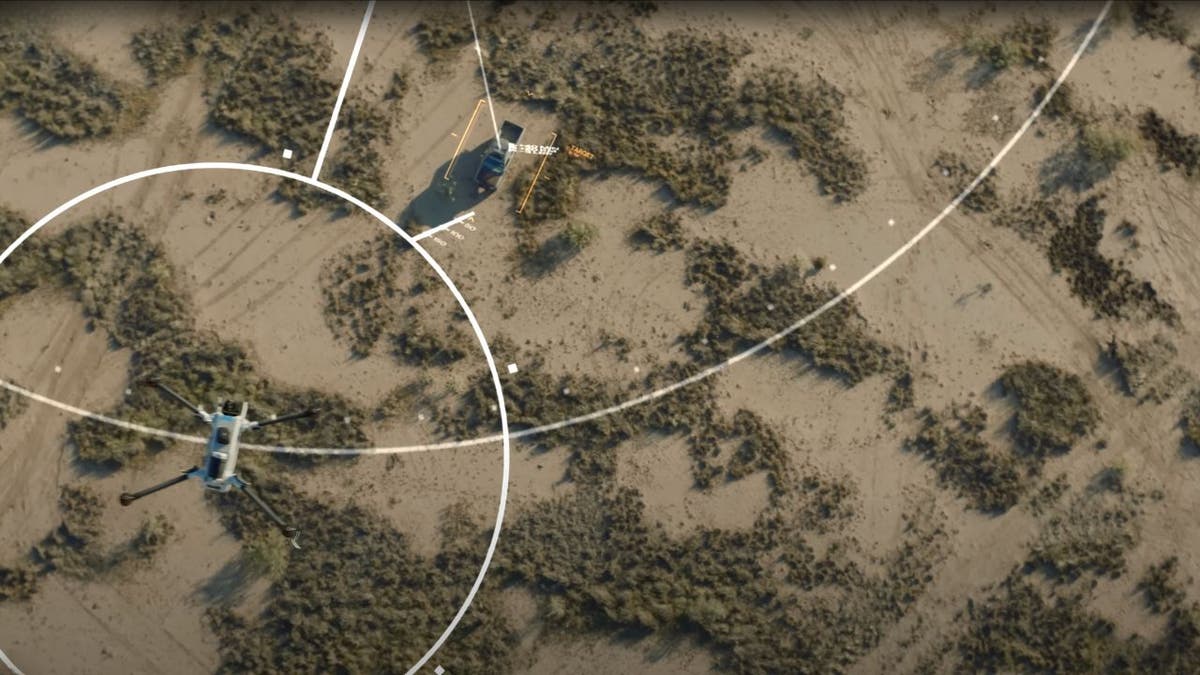
HOW SMUGGLING GANGS USE DRONES TO DELIVER DRUGS ACROSS THE BORDER
User-friendly operation
The design of both drones emphasizes ease of use. Operators interact with a touchscreen controller that simplifies decision-making into four key actions: where to look, what to follow, how to engage and when to strike. This intuitive interface allows for quick adaptations to changing battlefield conditions.

Touchscreen controller (Anduril)
Autonomous features and flexibility
The Bolt-M drone boasts advanced features such as:
Autonomous waypoint navigation: Operators can set specific paths for the drone to follow.
Target-agnostic tracking: The drone can track any visual target identified by the operator.
Modular payloads: Operators can easily switch between different types of warheads based on mission requirements.
These capabilities ensure that the Bolt-M drone can adapt to various operational needs while maintaining high levels of performance.
SUBSCRIBE TO KURT’S YOUTUBE CHANNEL FOR QUICK VIDEO TIPS ON HOW TO WORK ALL OF YOUR TECH DEVICES
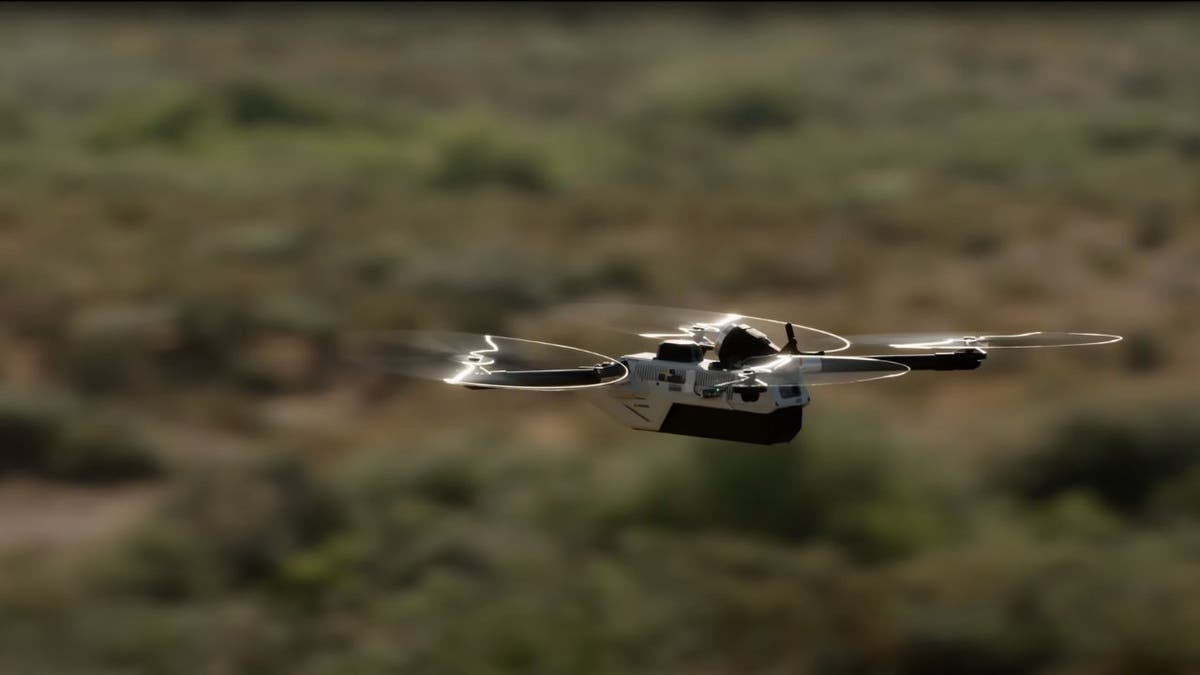
Kurt’s key takeaways
By combining lightweight design with sophisticated AI capabilities, these drones offer modern armed forces a versatile tool for both reconnaissance and precision strikes. As warfare continues to evolve, innovations like these will likely play a crucial role in shaping future combat strategies. The integration of such technology not only enhances operational efficiency but also aims to reduce the cognitive burden on operators, making military engagements more effective and safer.
What are your thoughts on the implications of AI-powered drones like the Bolt and Bolt-M for the future of military operations? Let us know by writing us at Cyberguy.com/Contact.
For more of my tech tips and security alerts, subscribe to my free CyberGuy Report Newsletter by heading to Cyberguy.com/Newsletter.
Ask Kurt a question or let us know what stories you’d like us to cover.
Follow Kurt on his social channels:
Answers to the most asked CyberGuy questions:
New from Kurt:
Copyright 2024 CyberGuy.com. All rights reserved.
-
Business1 week ago
Carol Lombardini, studio negotiator during Hollywood strikes, to step down
-

 Health1 week ago
Health1 week agoJust Walking Can Help You Lose Weight: Try These Simple Fat-Burning Tips!
-
Business7 days ago
Hall of Fame won't get Freddie Freeman's grand slam ball, but Dodgers donate World Series memorabilia
-

 Culture6 days ago
Culture6 days agoYankees’ Gerrit Cole opts out of contract, per source: How New York could prevent him from testing free agency
-

 Culture4 days ago
Culture4 days agoTry This Quiz on Books That Were Made Into Great Space Movies
-
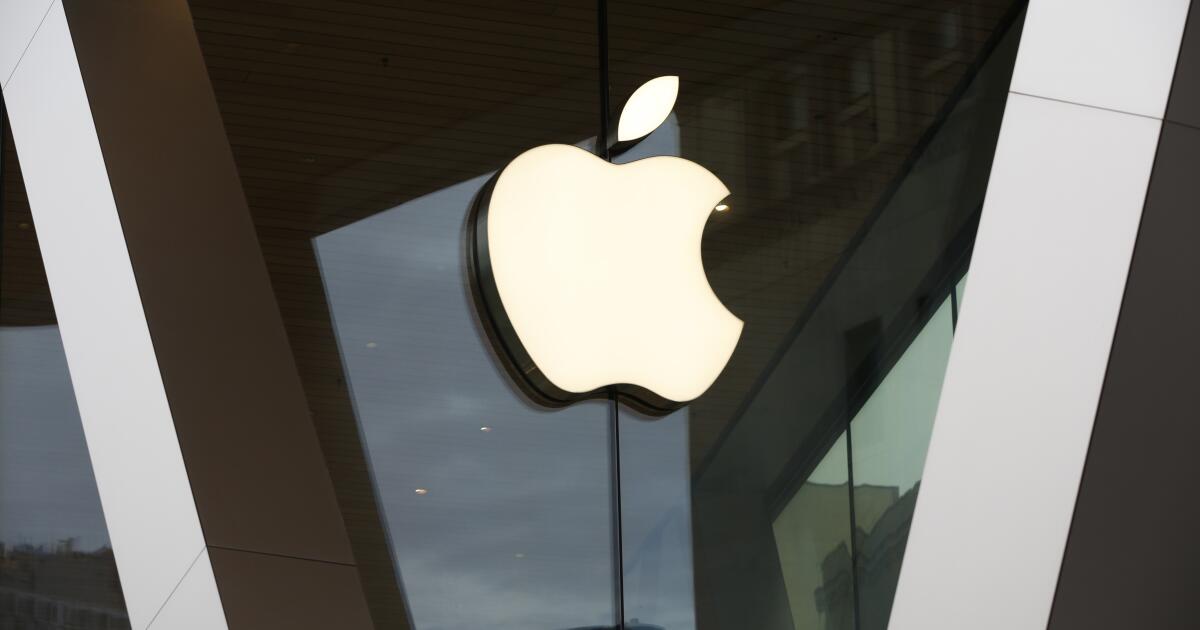
 Business1 week ago
Business1 week agoApple is trying to sell loyal iPhone users on AI tools. Here's what Apple Intelligence can do
-
/cdn.vox-cdn.com/uploads/chorus_asset/file/25299201/STK453_PRIVACY_B_CVirginia.jpg)
/cdn.vox-cdn.com/uploads/chorus_asset/file/25299201/STK453_PRIVACY_B_CVirginia.jpg) Technology7 days ago
Technology7 days agoAn Okta login bug bypassed checking passwords on some long usernames
-
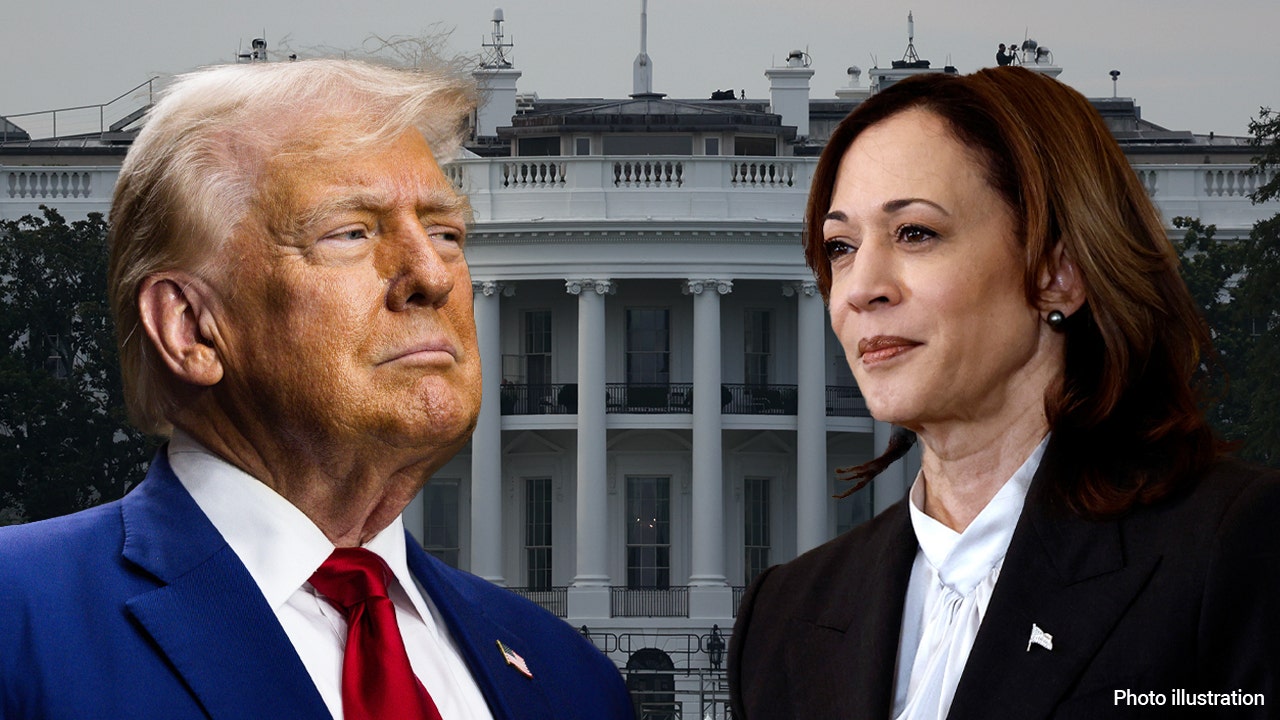
 Politics1 week ago
Politics1 week agoTrump pledges 'America's new golden age' as he rallies in PA's post-industrial third-largest city









